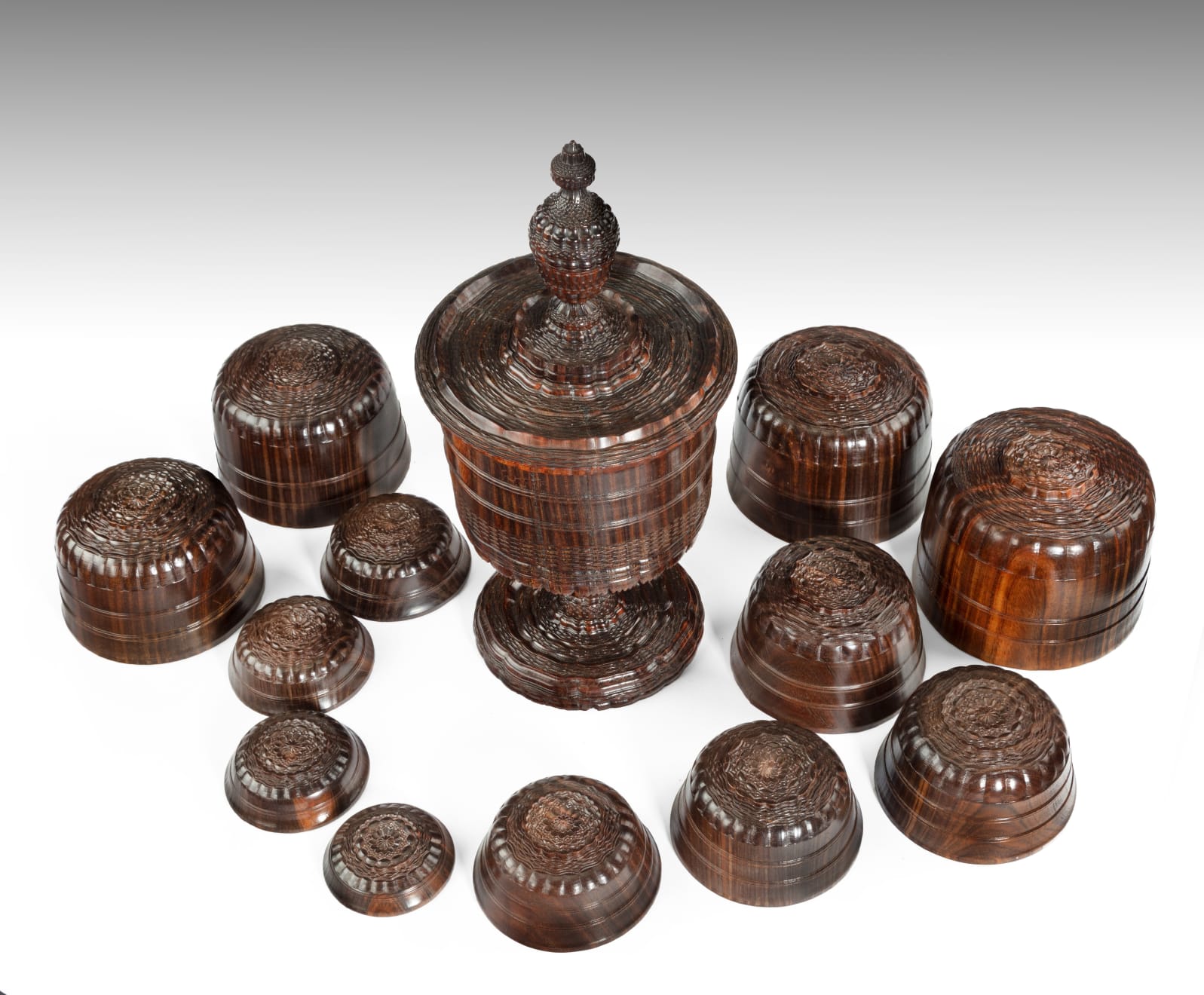Engine Turned Lignum Vitae Standing Cup and Cover and a complete set of 12 dipping cups
30 x 15 cm
Further images
Provenance
Berkeley Family, Spetchley Park, Worcestershire, by descentThe finial unscrews to reveal a spice box, the underside of the lid incorporating a nutmeg grater, and the interior containing twelve turned tumbler cups and tasters with ‘rose engine turning’ decoration to each base.
Jonathan Levi explains that it is believed that vessels were first made using lignum vitae when the wood was imported into England from South America in the late 16th or early 17th century: ‘The properties of this wood allowed the turner to give a bowl a greater depth than had been possible with English woods…, without causing splitting or subsequent leakage of the drink’ (Jonathan Levi, Treen for the Table: Wooden Objects related to Eating and Drinking (Antique Collectors’ Club, Suffolk, 1988), p.17). Lignum vitae was rare and very demanding to work, making the degree of decoration in this standing cup and cover very unusual.
The art of ornamental turning, as shown elaborately on this standing cup and, incredibly, on the base of each of the complete set of dipping cups, originated in South Germany in the 16th century. Often performed on ivory goblets as well as wood, the intricate geometric patterns were greatly admired and ivory examples in particular are represented in the Wunderkammers of the Great Treasuries of Continental Europe. The standing cup offered here demonstrates the highest level of sophistication achieved by a British turner and the conservation of its complete set of cups is apparently unique.














